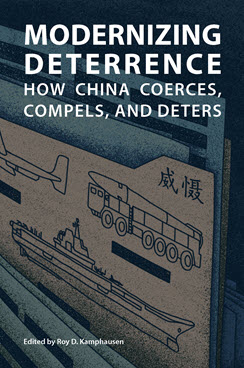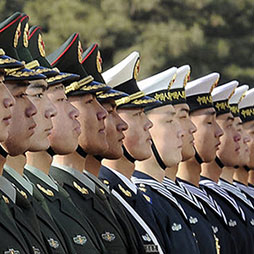Designing Deterrence
The PLA’s Outlook on Disruptive Technologies and Emerging Capabilities
This chapter examines China’s evolving approach to strategic deterrence and explores newer concepts and potential emerging capabilities that could reshape the PLA’s strategic deterrence system.
EXECUTIVE SUMMARY
MAIN ARGUMENT
The People’s Liberation Army (PLA) has accelerated its efforts to introduce disruptive technologies and emerging capabilities that will enhance its future strategic deterrence. These new domains and frontiers of military technology have the potential to be transformative and include advances in fields ranging from artificial intelligence to biotechnology. The success of the PLA in leveraging such novel and unproven systems to enhance its deterrence posture will hinge on the true credibility of these capabilities, which has been and will continue to be difficult to assess accurately. Chinese military strategists and scientists have highlighted asymmetric and innovative capabilities, ranging from drone swarms and hypersonic missiles to the possibility of genetic or biological weapons, as potentially advantageous to strategic deterrence. The PLA may seek to bolster its posture and system for deterrence based on displays, deliberate disclosure, and demonstrations, as well as propaganda highlighting technological advancements. However, the PLA’s actual capacity to realize an integrated, innovative paradigm for strategic deterrence remains unproven. Going forward, these trends merit ongoing analysis, given the risks and the uncertainty, which may have adverse impacts on strategic stability.
POLICY IMPLICATIONS
- Amid intensifying U.S.-China competition, exaggerated expectations about new strategic technologies (fueled by hype cycles) risk provoking or worsening dynamics of arms racing. Under these conditions, there may be incentives to rapidly introduce new weapons systems, which could increase the risk of an accident or inadvertent escalation.
- Meanwhile, mistrust in U.S.-China relations, exacerbated by misinformation and conspiracy theories, could justify the development or deployment of weapons systems that are dangerous, destabilizing, or directly contravening norms in international humanitarian law.
- Given the risks and stakes, the U.S. and Chinese governments should incorporate discussions of these issues into future dialogues and work to adapt existing mechanisms for crisis management.
Elsa B. Kania is a PhD candidate in Harvard University’s Department of Government. Her views are her own.



